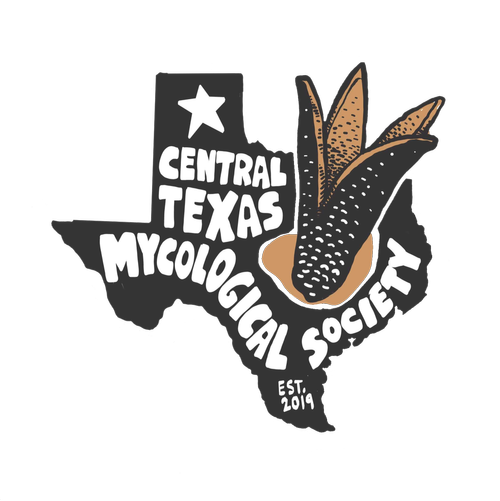July Mushroom of the Month: Purple-spored Puffball, Calvatia cyathiformis
🍄⭐The July mushroom of the month is Purple-spored Puffball, Calvatia cyathiformis
👏 Congrats to May Feng for guessing it right and winning a membership to the society! 🎉
You can also be a supporting member to stay dialed-in with events & discover next month’s mystery mushroom.
puffball gigante
Two grapefruit-sized puffballs bloom in the grasslands of North America: the Giant Puffball, Calvatia gigantea, and the Purple-spored Puffball, Calvatia cyathiformis. Both are edible when young—their interiors pure white and marshmallow-soft. What distinguishes the Purple-spored from its cousin is its transformation with age—body and spores evolving from pure white to deep, rich purple. In East and Central Texas, it fruits June to October, often in open woods, fields, and roadsides. The fungus grows in various soils, including clay, loam, and sand, and is associated with oak, pine, and other deciduous trees
taxonomy & ecology
Calvatia cyathiformis, or purple-spored puffball, is a large saprobic Calvatia species. This terrestrial puffball has purplish to purple-brown spores, distinguishing it from other large Agaricales. The fruiting body is 5–20 cm (2–8 in) high or broad. When young it’s smooth, spherical or slightly flattened, and white, purplish, or brownish. It has a chocolate-brown or purple gleba with a smooth exoperidium. As it matures, it becomes pear- or top-shaped, and the exterior darkens or silvers. Later, the skin cracks, releasing spores dispersed by wind and rain. A leathery sterile cup remains after spores disperse.
uses & benefits
Besides being edible when young, puffballs can be used to dye fabrics and paper when used in combination with ammonia (as a mordant). Purple-spored Puffballs create a rusty red color while Giant Puffballs make a more reddish-brown dye. Medical scientists are currently investigating puffballs in the genus Calvatia because they have been shown to prevent some types of tumors. For years, puffballs have been used as a styptic to stop bleeding and to dress wounds − both powdered and slices of the mushroom.
BECOME A SUPPORTING MEMBER & stay Dialed in with events & discover next month’s mystery mushroom





